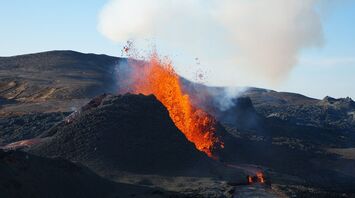Kilauea Volcano Erupts Again: What Tourists Planning a Trip to Hawaii Should Know

The Kilauea volcano, known for its frequent eruptions, has become active once more on Hawaii's Big Island. The current event showcases striking lava fountains up to 32 feet high, occurring in an isolated region at the southern end of the island.
Despite the increased volcanic activity, authorities have reassured that the ongoing eruption does not pose a danger to inhabited areas. Volcanologists are closely observing the situation and collecting molten rock samples for examination. In 2019, Kilauea’s powerful eruption and accompanying seismic activity destroyed numerous homes and businesses in the area.
Impact on Tourism and Tips for Travelers
Hawaii remains one of the top tourist destinations globally. However, visitors planning a trip to the Big Island should take the volcanic activity into account. Tour operators regularly adjust tour routes to prioritize safety. Although the eruption is localized in a remote area, travelers should keep themselves informed through updates from local authorities and avoid potentially hazardous zones.
For those intrigued by natural wonders, Kilauea’s current activity presents a unique chance to witness volcanic phenomena. However, it is essential to follow safety protocols when visiting national parks and to heed the advice of guides.
Preparing for Unexpected Situations
Although the current eruptions do not affect most tourist zones, it is crucial to stay prepared for potential disruptions in flight schedules or weather conditions triggered by volcanic activity. Travelers should monitor road updates and possible closures of tourist routes.
Hawaii’s breathtaking landscapes come with a degree of unpredictability. Eruptions like this remind us that our planet is constantly evolving, and travelers should always be ready for the unexpected.
Kilauea remains one of Hawaii's most awe-inspiring natural attractions. Despite its activity, visitors can continue to enjoy the beauty of the islands by staying informed and following the guidance of local officials and tour operators.



















